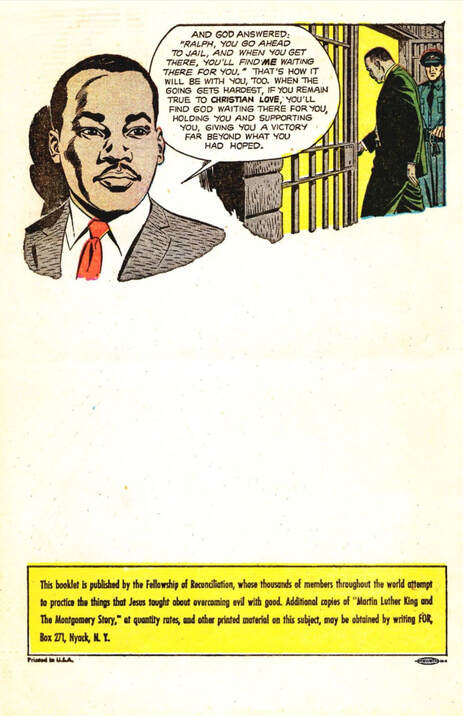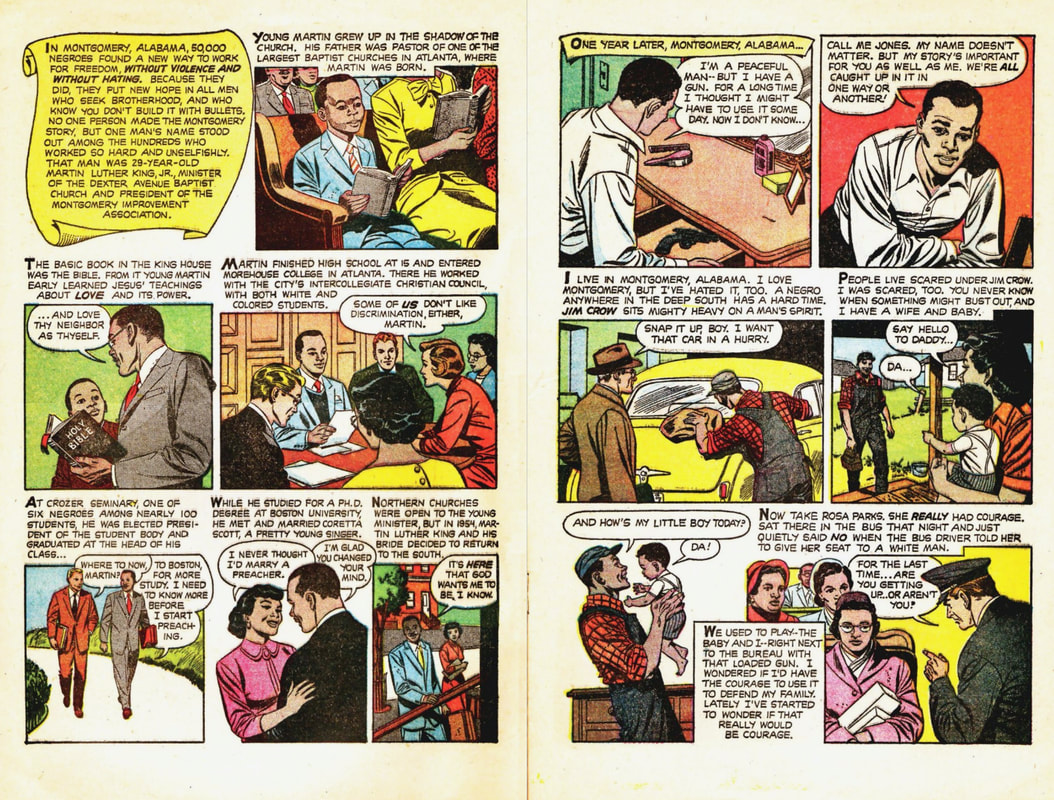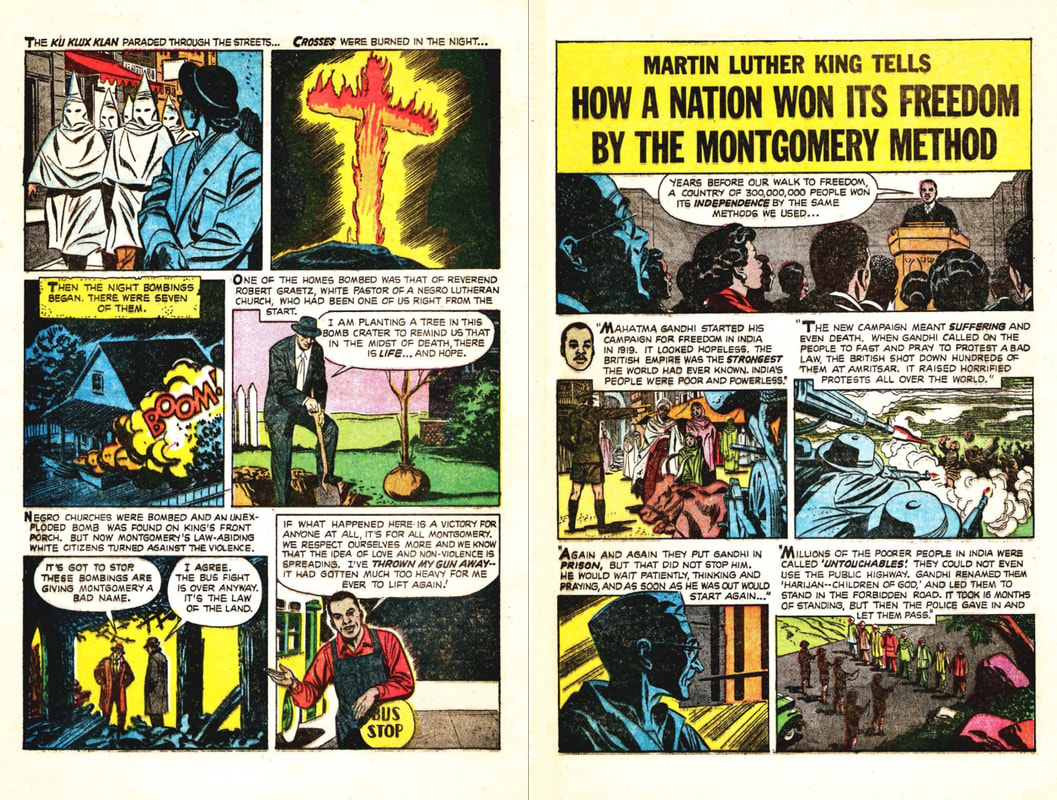Written by Juanita ‘Obi-Juan’ Bonner  What comes to mind when hearing the words Civil Rights? For me, I’m immediately flooded with multiple images. Mostly of black and white photos and videos from the 1960s when color had a strict line matching those very same depictions – black and white. Sadly, from post-Reconstruction (1860s) well into the 1950s, Jim Crow was the law of the land making racial segregation commonplace in the south. Further solidified by a Supreme Court decision, Jim Crow dominated virtually unopposed for nearly 100 years (1877-1954). WOW!! Thanks Plessy v. Ferguson (1896)!! *Insert eyeroll here* Though reversed by the Brown v. Board of Education decision in 1954 (*YES!!), the lasting effects of Jim Crow still linger today. As for those images?? I not only see them, but FEEL them too! For they’re not only African American history. They are MY history and to a greater extent, American history. Rich with strife yet full of glory and triumph as well. And in 1955, one Rosa Parks grabbed some of that glory and changed the course of OUR history forever when she refused to give up her seat in the ‘Whites Only’ section on a bus in Montgomery Alabama sparking the monumental Montgomery Bus Boycott. *ROARING APPLAUSE* I covered Rosa and this event in my comic review: Rosa Parks and the Montgomery Bus Boycott and today, I’d like to expand by discussing one of the most prominent figures of the Civil Rights era – Dr. Reverend Martin Luther King Jr. – and how his own little comic helped ignite movements for change. So, let’s take a closer look at: Martin Luther King and The Montgomery Story, shall we? Published in 1957, only a few short years after the Montgomery Bus Boycott, Martin’s comic was conceived at a time when comics themselves faced vilification. Spearheaded by the German psychiatrist Fredric Wertham (1895-1981), the comic book industry came under scrutiny in the 1950s for violent imagery and childhood corruption. I mean… the Cold War era, am I right… LOL!! This led to a Congressional inquiry that later produced The Comics Code of Authority in 1954. But none of that stopped Alfred Hassler (1910-1991), the Publications Director at the Fellowship of Recognition (FOR) – “A global movement founded in 1914 to support the rights of conscience in resistance to war and military conscription.” Ironically, Hassler didn’t even allow his own children to read comics (*THE HORROR!!* – LOL!), but firmly believed in: “The medium’s value in reaching a different, younger audience than a conventional book.” Thus, penned by Hassler and Benton Resnik and inked by Sy Barry, The Montgomery Story was born. Dr. King also provided editorial commentary that was directly added to the final product. *NICE!!* Spanning the country and eventually the world, the 16 page comic inspired multiple movements in and out of the US, including anti-apartheid and Arab Spring protests. HOLY COW!!! I certainly didn’t know that going in, but boy am I damn proud to know it now!! *BRAVO!* As for its contents? Unlike the Parks comic, The Montgomery Story is structured more like traditional comics. There’s no table of contents or bibliography as with Rosa’s book. And with regards to traditional mainstream comics published in 1957, there’s also no Comics Code Authority Seal. However, the rest of the material has the Silver Age (1956-1970) look all over it. Bright colors and distinct boxes along with bolded letters and shaded bubbles give the comic a very comfy and historic feel. In contrast, self-published and distributed by FOR, the comic is absent an ISBN (International Standard Book Number), ads (*SEA MONKEY’S* – LOL!!) and letter’s to the editor commonly seen in other popular Silver Age pieces. Finally, there’s no other specific publishing date or information save for a few sentences from FOR on the back cover. Nor do any of the pages within have numbers. Even the reprints and digital versions look this way. I found this rather interesting for some reason and I guess now you have to as well… LOL!! Moving on, let’s talk about the magnificent story within. A bright yellow scroll lays the groundwork with an opening statement that starts with: “In Montgomery, Alabama, 50,000 negros found a new way to work for freedom without violence and without hating.” Inspiring to say the least, the scroll continues and discusses how it took multiple people to make The Montgomery Story happen, but it was a young Reverend who rose above the rest. At only 29 years old, I might add. Sheesh!! Thanks to Dr. King’s efforts, my 29, though a struggle, was much easier than his… that’s for sure!! The next couple of pages give us a brief yet enlightening background on Dr. King. From childhood to Reverend, he firmly believed spreading the word of the Lord was his calling. Born and raised in Atlanta, GA, He finished high school at 15 (*WOW!!*) then went on to Morehouse College where he interacted with the city’s Intercollegiate Christian Council. It’s here that he discovered like-minded people regarding racial discrimination – both colored and white. *NICE!* The seeds were planted and from there he became President of the Student Body at Crozer Theological Seminary in Pennsylvania where he graduated at the head of his class with a Bachelor of Divinity (BDiv). At the time, he was only one of six African Americans in a class of almost 100. *HOLY COW* I mean… just think about that? This was in 1951 at the height of Jim Crow, the Ku Klux Klan, etc.!! And he didn’t stop there. Continuing on to Boston University, King earned his Dr. title with a PhD in the School of Divinity. This is where he met his future wife, Coretta. *AWWW* After finishing his education, in 1954, Dr. King turned down opportunities to minister in the north and instead moved back to the south. This time to Montgomery, Alabama. With a firm belief that: “It’s here that God wants me to be, I know.” And boy was he right!! We’re then introduced to an African American character named Jones who took part in the boycott and becomes our narrator for the story. By 1955, Jones and his family, like virtually every African American at the time, were under the thumb of Jim Crow. Enter Rosa Parks who was arrested when she refused to give up her seat on a bus. Later that evening, Dr. King struggled to sleep and eventually woke his wife stating: “Something ought to be done.” The very next day, Dr. King gathered with friends and neighbors and began to discuss a boycott. Not sure of how to get the word out, the local television news and newspapers, inadvertently spread the word for them, by reporting on the perceived menacing boycott. I cannot even begin to tell you how much I love this… LOL!! Because… their racism backfired (*BIG GRIN*) and on December 5, 1955, the boycott took hold… big time!! *YES!!* Continuing on, subsequent pages show Dr. King organizing, giving speeches and becoming the face and full-fledged leader of the movement. As the boycott continued, he stressed nonviolence at every turn. Even in the face of harassment from all sides. Including a bomb explosion at his home. *WOW!* Our narrator Jones said it best: “If a man can see his home bombed and not fight back – except with love – then there is hope for all of us.” I pondered this statement for a very long time. Why? Because I was angry. And rightfully so!! It’s hard to imagine this struggle. So hard in fact, that it can be difficult to teach. Especially in today’s politically polarized society. And it’s worth noting that it can be tough to comprehend that in general, folks back then were much more self-righteous in their racism. It was blatant and out in the open. And sadly… accepted. *SIGH!* Unfortunately, countless are ignorant of this struggle. Videos and images don’t do it justice and in fact, might even be desensitizing to some extent. Only learning and understanding can produce change and it’s disheartening to say the least that we struggle with this now for no other reason than a fight for money and power. *SIGH* Still, the boycott pressed on. Harkening back to the introduction scroll, some 50,000 negros hit the city where it hurt the most – the pocketbook. *HELL YEAH!!* Filing suit, the case of Browder v. Gayle seeking to find bus segregation unconstitutional made its way to the US District Court for the Middle District of Alabama. By that time, last ditch efforts by Montgomery officials saw 93 leaders of the movement arrested. Still our protestors kept the peace. Everyone knew a verdict was coming soon!! In preparation, the protesters practiced how they would behave once they resumed riding buses. I pondered on this for a long time as well. Why? Because this detail had never really occurred to me. Sit quietly with your hands in your lap. Do not make a fuss and do not respond to insults. I cannot even imagine how hard that must’ve been. Though it’s quite similar to what people of color face today when confronted by the police, it’s this very comeback that allowed progress. Albeit slow, I would not be able to stand up for myself today without this calculated response. For matching vitriol and violence head on at any turn would’ve halted the movement in its tracks giving every bias and bigoted individual justification for their so-called Separate but Equal Doctrine. Similar to Native Americans, and sadly no different today, I have absolutely no doubt that negros would’ve been depicted as savages in a movement they had no business participating in. *YUCK!!* Thankfully, cooler heads prevailed and bus segregation was found unconstitutional!! *HECK YEAH!* The boycott lasted 13 months!! Something I don’t think I was completely aware of before writing this article. And, as folks returned to riding buses, their peaceful resistance could not be denied. Many whites began to accept the court’s decision and move on with their lives. However, a whole other group of asshats decided to take matters into their own hands. The infamous Ku Klux Klan staged attacks, cross burnings and even church bombings. Yes, I said CHURCH bombings. *SIGH* After the death of Reverend Robert Graetz, a white pastor of a black Lutheran church, many of Montgomery’s white citizens began to say no more! *ABOUT DAMN TIME!* Jones closes this progressive chapter on US History by stating: “If what happened here is a victory for anyone at all, it’s for all of Montgomery. We respect ourselves more and we know that the idea of love and non-violence is spreading.” Another long pause as this comic was written well before many more Civil Rights moments and in fact, inspired the lot of them. I think about the George Floyd protests in 2020. How even though the majority were peaceful, the plight was stifled by all the noise of riots, looting and violence. How we’ve come this far and still, our voices are silenced by those who deem us savages. As if burning a CVS to the ground, though not okay, equates to murder at the hands of those sworn to protect and serve. I picture Dr. King at the front of this and my anxiety lessens a bit. If only for a moment. *SIGH* The final pages belong to Dr. King himself as he walks us though: “How a Nation won its freedom by The Montgomery Method.” Beginning with the peaceful teachings of Mahatma Gandhi (1869-1948), Dr. King discusses how the entire nation of India won their independence from British rule. A crusade that played out over decades from 1857 to 1947. *HOLY COW* And guided by the wisdom of Gandhi, the majority sought peaceful means to do so. An astounding feat, to say the least. Dr. King relied heavily on Gandhi’s message of nonviolence and civil discourse and used it as the basis for the four pillars of The Montgomery Method.*NICE!* As my most favorite part of the comic, the last few pages abandon the traditional panel layout and finish up with a more 1920s ad look that has a series of graphics to one side of each page and paragraph text to the other, alternating throughout. I’m not sure why, but I’ve always loved this format and absolutely admire that FOR chose to end with this type of illustration. In particular, two images really stand out for me. The one of a black man looking in the mirror to which a white man is looking back. Talk about powerful!! The second is the final image of the comic which resides on the back cover. It shows a close up of Dr. King discussing Christian love as a background of him is seen entering what’s presumably the place where he wrote his most famous letter in 1963 – the Birmingham Jail. Ah… the fight continues!!  As for The Montgomery Method? In short, 1. Decide your cause; 2. Educate yourself – do not act on rumors or half-truths; 3. Talk to the people concerned – don’t argue – just simply tell them your side and listen to theirs; and finally, 4. Make sure you are ready – seek help from someone with experience and run practice scenarios to face ANY opposition without resorting to violence. As Dr. King said: “In Montgomery we used the nonviolent Christian action to get Jim Crow off the buses. It can be used anywhere though, against any kind of evil.” And truthfully, he’s right!! We ALL could use a bit of The Montgomery Method in our lives. A means of seeing ourselves in our oppressors. In our enemies. Just like the mirror image noted above. It’s work. Much harder than throwing a Molotov cocktail or lighting a cross on fire. And it’s definitely harder than hating someone for their differences. For hate is taught and, from where I sit, quite often misplaced. Simply put: “Nonviolence is the weapon of the strong.” (Mahatma Gandhi) Dr. King practiced this every single day!! He then did his best to teach the world to practice it too and this wonderful little comic, years ahead of its time, is yet another avenue to pass on his message. Especially to children. The language is plain. The artwork is engaging. And the overall story doesn’t vilify anyone. Not even those wretched cross burners. Like the Rosa Parks comic, it simply states what was. What’s even better is the comic itself, directly from FOR, is only $5. It can also be purchased in bulk orders of 21 or more for just $2.50 each. And the profits benefit the Foundation. Plus, the comic itself has been translated into multiple languages including Spanish, Arabic and Farsi. *NICE!!* There’s also a full K-12 Curriculum and Study Guide on the FOR website separating activities by grade ranges and providing notes for teachers. All designed to facilitate not only learning about The Montgomery Story, but its global impact then and now. *AWESOME!!* Lastly, the graphic novel is available everywhere comics are sold, including digitally. I happily have both a print and digital edition. What will you get? And there you have it! Another educational graphic novel proving history can be shared, understood AND heeded without vilification. I learned a lot!! More than expected actually. Because: “Knowledge is the process of piling up facts; wisdom lies in their simplification.” (MLK) And to that I say… YAY COMICS!! Until next time. Summary: “This 16-page comic is a simple but revolutionary account of the 1955 Montgomery Bus Boycott, in which Rosa Parks, Dr. King, and 50,000 others used the power of nonviolence to battle segregation on city buses - and win. First published in December 1958 by the Fellowship of Reconciliation, it went unnoticed by the mainstream comic book industry, but spread like wildfire among civil rights groups, churches, and schools, helping to mobilize a generation to join the global fight for equality - nonviolently. Personally endorsed by Martin Luther King, Jr. himself, over time this comic book has reached beyond his time and place to inspire activists in Latin America, South Africa, Vietnam, Egypt, and beyond... as well as inspiring MARCH, the graphic novel trilogy by the late Congressman John Lewis, Andrew Aydin, and Nate Powell.”
0 Comments
|
Archives
May 2024
|
|
© 2012-2025, Nerds That Geek LLC.
All Rights Reserved. |
uWeb Hosting by FatCow



